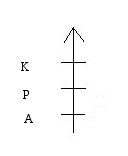
Notes on Modeling: Session II: Elections and Voting
Prepared by:
Joseph Malkevitch
Mathematics Department
York College (CUNY)
Jamaica, NY 11451
email:
malkevitch@york.cuny.edu
web page:
http://york.cuny.edu/~malk/
1. There are many election decision methods which can be used with ordinal ballots. These methods can be thought of as functions which map voter preferences to a single winner or a set of winners (where there is a tie) or when more than one candidate has to be chosen. In English speaking countries typically people vote for one candidate in a "district" but in many other democratic societies election districts may involve selecting more than one seat in a district. This leads to the concept of a multimember district. How large should such districts be when there are many seats to be filled, say for the national Parliament of some democratic country? When one elects people to a "committee," that is, more than one slot has to be filled, a variety of additional goals come into play beyond what one wants an election procedure to accomplish when there is a single seat to be filled. Can you give examples of such goals?
2. Sequential run off based on the number of first place votes that a candidate has received is an appealing method. In the United States it is currently being promoted under the title IRV (Instant Run-off Voting; the instant refers to the fact that since ordinal ballots are collected, voters do not actually have to go to the polls a second time). In other situations the related system known as the STV (Single Transferable Vote) is used. This is true for Ireland, and this method used to be used in NYC to elect members to local schools boards.
Having thought of it, there are other types of sequential run-off procedures that can be created. For example, instead of basing the elimination of candidates on the basis of first place votes one can try other approaches:
a. Borda count, sequential elimination. (This is often called Baldwin's or Nanson's method.) The idea is to compute the Borda count of all the alternatives. Eliminate the alternative with the lowest Borda count. Eliminate this candidate from all the ballots, and repeat the process.
b. Coombs Method. Here the idea is that if no candidate gets a majority with respect to first place vote then one eliminates the candidate with the largest number of last place votes. This candidate is stricken from the ballots, and the procedure is repeated.
Does the Coombs method always choose the Condorcet winner when there is a Condorcet winner? If the Coombs winner and Condorcet winner are different, which of these two methods do you feel is "better?"
3. Many people do not like IRV as a method, feeling that when their is a Condorcet winner this candidate has a better claim to being elected than the IRV candidate. This raises the question about what to do when there is no Condorcet winner. When there is no Condorcet winner one can seek a way to select a winner in this case. For example, Duncan Black, (a British political scientist, now deceased) who invented the notation for ordinal ballots

we have been using, suggested when there is no Condorcet winner that the Borda Count be used. This approach is now sometimes called Black's method, but there are many other ways to "complete" who should win the election when there is no Condorcet winner. What are good criteria for choosing among these different "Condorcet Completion" methods?
Donald Saari, a mathematician who has written widely on election decision methods, has argued that the Condorcet winner is not the best choice even when there is Condorcet winner. He has supported the use of the Borda Count.
4. As teachers, a enjoyable challenge is to find ways to weave ideas about voting, elections, and fairness, into your teaching at various grade levels. Thus, the Borda Count could be taught as a way to practice multiplication in lower grades. The pairwise preference matrix is a way to introduce the idea and value of "storing" information in a matrix. The same information can be coded into a digraph. One could get students to work with percentages in many ways related to the different methods. For example, in a given election, what percentage of voters ranked candidate C in 3rd position?
5. Now that we see that the same collection of ordinal ballots can yield different winners with different methods we are faced with how to decide when one method of deciding an election is better than another method. How might we do this?